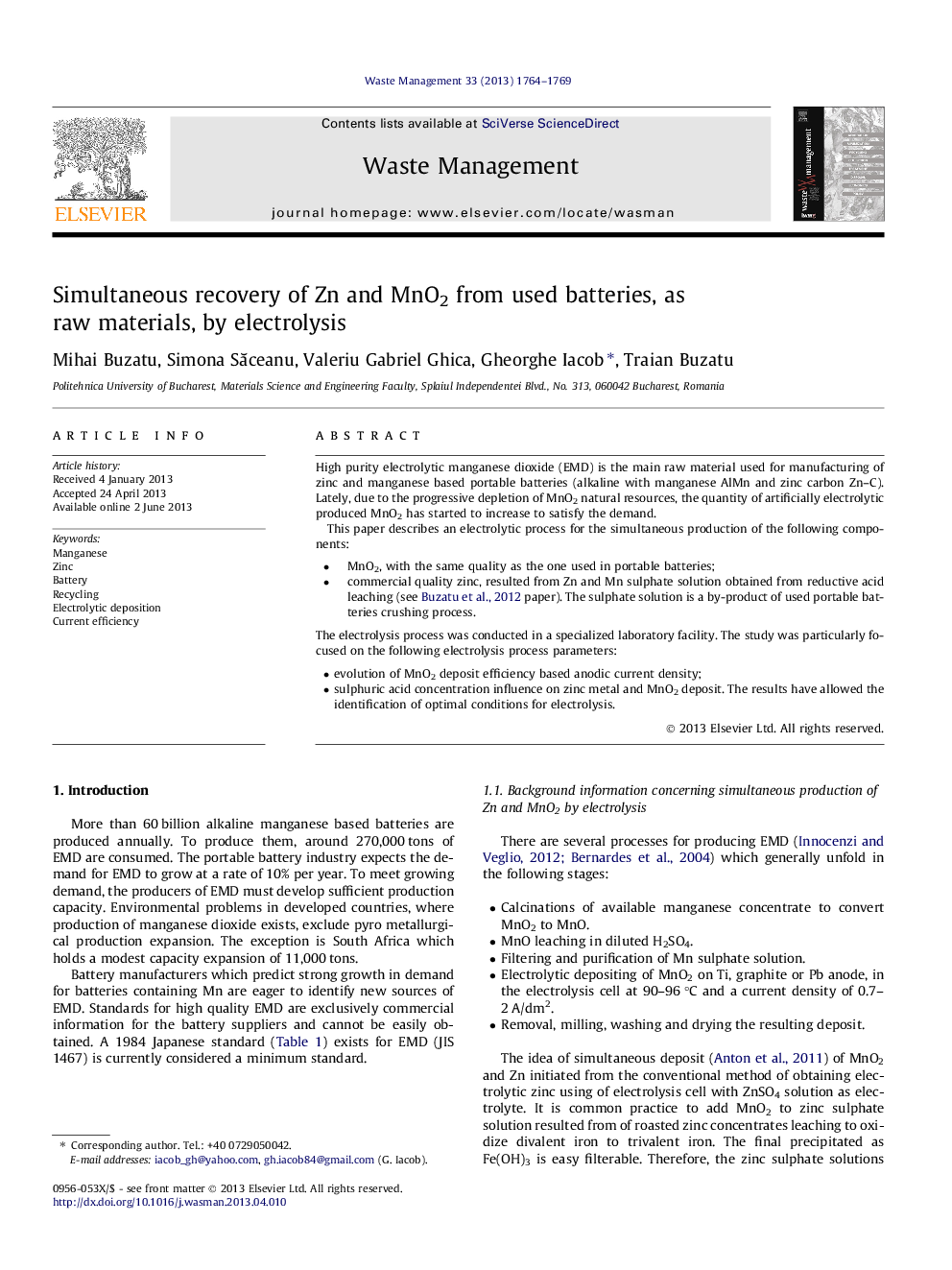| Article ID | Journal | Published Year | Pages | File Type |
|---|---|---|---|---|
| 4471782 | Waste Management | 2013 | 6 Pages |
•Current efficiency increases with increasing anodic current density through a max. of 94.02%.•In the 10−4–0.5 moles/l concentration range has been obtained a current efficiency of 90%.•Mn3+ ions become more stable and subsequent oxidation is thus possible at Mn4+.•MnO2 content in the finished product had a level of over 90%.
High purity electrolytic manganese dioxide (EMD) is the main raw material used for manufacturing of zinc and manganese based portable batteries (alkaline with manganese AlMn and zinc carbon Zn–C). Lately, due to the progressive depletion of MnO2 natural resources, the quantity of artificially electrolytic produced MnO2 has started to increase to satisfy the demand.This paper describes an electrolytic process for the simultaneous production of the following components:•MnO2, with the same quality as the one used in portable batteries;•commercial quality zinc, resulted from Zn and Mn sulphate solution obtained from reductive acid leaching (see Buzatu et al., 2012 paper). The sulphate solution is a by-product of used portable batteries crushing process.The electrolysis process was conducted in a specialized laboratory facility. The study was particularly focused on the following electrolysis process parameters:•evolution of MnO2 deposit efficiency based anodic current density;•sulphuric acid concentration influence on zinc metal and MnO2 deposit. The results have allowed the identification of optimal conditions for electrolysis.
